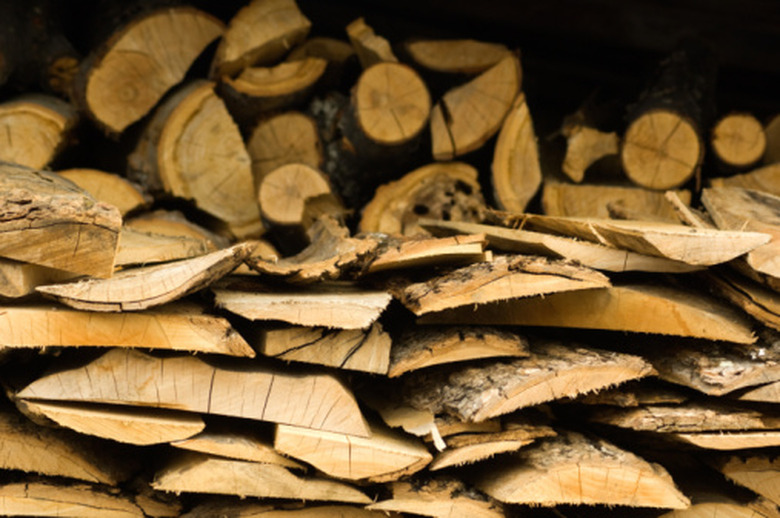How To Identify Split Wood Firewood
Choosing the right firewood is essential to having good fires and keeping a fireplace in good operating condition. Some woods, like pines, have high levels of resins that produce creosote when burned. Creosote can adhere to chimneys and build up over time to dangerous levels, which can cause fires because creosote is very flammable. Hardwoods, like oak and hard maple, are the best firewood. Some woods, like willow and sycamore, have high-moisture contents and dry to burn almost like paper. Check a firewood guide before splitting or buying wood for firewood. Once firewood has been split, it's challenging to tell the woods apart.
- Choosing the right firewood is essential to having good fires and keeping a fireplace in good operating condition.
- Some woods, like willow and sycamore, have high-moisture contents and dry to burn almost like paper.
Step 1
Use leaves and bark for identifiers. Split wood may not have leaves, but often branches or twigs will have remnants of leaves that can identify firewood. Pines, cedars, firs and other softwoods have needles rather than leaves, which is a good identifier. Check the bark; there should be some on at least some logs. Desirable woods like oaks and hard maples have distinctive barks. Pines and hackberry have rough, almost gritty bark.
Step 2
Look at the wood grains. Oaks and similar hardwoods have long, straight grains. Splinters should pull free easily. Elms and other undesirable woods have stringy, twisty grains that do not separate easily. Look at grains both on split edges and on the ends; it may be easier to tell fine grains from end cuts. Test split a piece of wood; oak, walnut and similar hardwoods split easily. Elm, hickory and other woods won't split. Softwoods like pine and cedar may split too easily.
- Use leaves and bark for identifiers.
- Pines, cedars, firs and other softwoods have needles rather than leaves, which is a good identifier.
Step 3
Try color, smell and weight. Oaks, maples and similar woods can sometimes be identified by color, generally pale. Walnut has a distinctive brown shade, pine is whitish or yellowish, cedar is darker. Oak, pecan and some other woods have pungent odors, especially when freshly cut. Lift comparable pieces of wood. Oaks and other hardwoods will be heavier, pines and conifers are lighter, and porous woods like willow and sycamore are very light.
